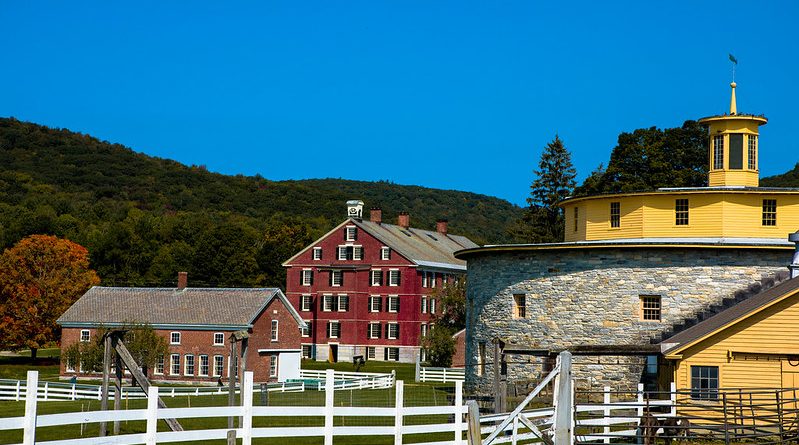Piety & Innovation: The Hancock Shaker Colony
The Hancock Shaker Village in Pittsfield is located on a 1,200 acre site in the scenic Berkshire Hills, western Massachusetts. Here on the third of 19 sites established in the 18th century, the original life of the Shaker, America’s most successful communitarian society is still preserved as a museum village.
Hancock was home to members of the communal, religious society from 1783 to 1960 when it became an outdoor history museum. Today its buildings, collections and programs interpret three centuries of Shaker life and work, with activities aimed at visitors of all ages.
Who were the shakers?
The Shakers were an offshoot of theQuakers who abandoned England and arrived in New England in 1774, led by the radical and forward thinking Ann Lee. They took their name from the way they would ‘shake’ after prayer, so deep was their faith and the way it moved them. Their fundamental values were communal living, separate from the rest of the world, equality of the sexes and celibacy.
TehnologyThey were efficient farmers, businessmen and technicians, considered seriously advanced for their time. Unlike other pious groups, the Shakers didn’t reject the encroachment of technology. In fact, they were at the forefront of technical development. For them work was a form of worship, if you could improve your working you were improving your relationship with God.
Their inventions include the round stone barn, a power water system, circular saw, rotary harrow, threshing machine and an automatic hay-seeding device. They were able to use water for many things, like tunnelling it to do laundry. Built in the eighteenth century, this harnessing of power was very innovative for its time. Usually confined to industrial areas, for a farm of Hancock’s size to have a turbine was virtually unheard of. Without the Shakers, the face of modern agriculture could have been quite different.The most famous of all the Shaker buildings in Hancock Village is the Shaker Round Barn and it pretty much summarises their work ethic. They tried to create systems that made everything as efficient as possible which made their neighbours in farming communities green with envy.
BeliefsLike the Puritans who came here before them, the Shakers arrival allowed them to live by their own code. Their main tenant was of celibacy. Men and boys lived on one side girls and women on the other, they didn’t mix, they didn’t mingle, they didn’t even marry. In fact, they were more like brothers and sisters. However, if you broke this code, you would simply be asked to leave the community. Obviously, this community didn’t breed like conventional society, and they were reliant on people joining the cult from outside to sustain their ranks. The flipside of this austerity was that you got to be a part of a community of people, whose code of living focused on love, respect, nurture and harmony.
FurnitureIn the 19th century, shaker furniture was dismissed as an ugly collection of sticks. Today, they are achieving huge prices. Oprah Winfrey recently paid $230,000 for a small chest and $30,000 for an oval box.
MORE INFORMATION
Hancock Shaker VillageOfficial website of the Shaker museum
Destination – New England




